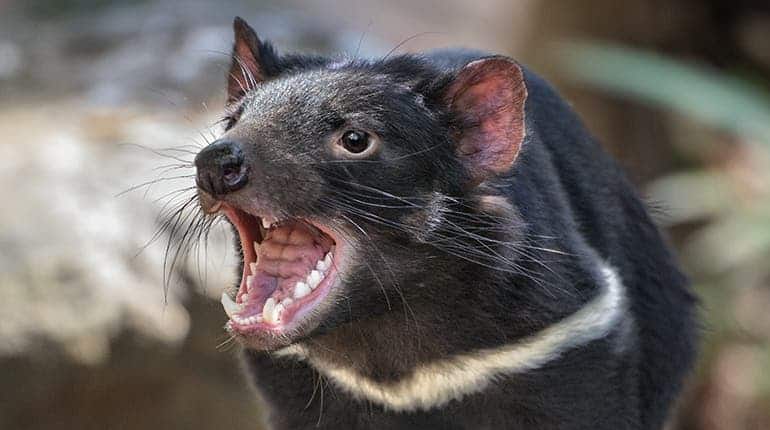Some conservationists are considering introducing the Tasmanian devil, currently only found in Australia’s island state of Tasmania, back to the mainland. The devil went extinct on the mainland some 3,000 years ago, and scientists hope the predator might restore balance to the local ecosystem, currently destabilized by too many cats and foxes.

The devil likely went extinct at the hand of the dingo, its natural predator. In the meantime, dingoes have been dramatically culled by farmers to protect their livestock. However, when dingoes were killed the local fox, kangaroo and wallaby populations shot up. Foxes ate large numbers of small mammals, while kangaroos and wallabies destroyed vegetation which smaller marsupials, mice, bandicoots and native rodents live in. It’s turning the whole ecosystem upside down.
Mitigating dingo populations in some areas, and introducing them in others is something Australian ecologists have advised for some years. But since most people (uhm, farmers) in Australia think of dingoes as pests, a more viable solution might be to introduce a new predator that fills the dingo’s niche, but doesn’t affect livestock. This is where the Tasmanian devil might come in.
To see what kind of impact the devil’s re-introduction back to Australia’s mainland might have, researchers at University of New South Wales (UNSW) devised several models. The analysis does indeed confirm that the apex predator has all the necessary qualities to fill in the shoes of the dingo and restore balance to an already fragile ecosystem faced with a massive risk of extinction.
The models show that once on mainland, the devil would take care of the cats and foxes which would quickly diminish in numbers. Not to mention the poor wallabies.
“There is very good evidence from Tasmania that cats modify their movements and numbers are lower where there are healthy devil populations,” said study co-author Mike Letnic, an associate professor at UNSW.
“We need to take action to arrest the extinction crisis we have in Australia, and that requires being bold and trying something new.”
At the same time, the devil isn’t a fix-it all. The models show that even with foxes gone at the hand of the devil, many species currently threatened by foxes did no see any benefit from the devil’s introduction. This means that the ecosystem interplay is more complex than just foxes and wallabies.


